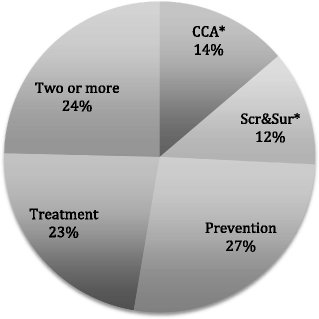The global pendulum swing towards community health workers in low- and middle-income countries: a scoping review of trends, geographical distribution and programmatic orientations, 2005 to 2014
- PMID: 27784298
- PMCID: PMC5081930
- DOI: 10.1186/s12960-016-0163-2
The global pendulum swing towards community health workers in low- and middle-income countries: a scoping review of trends, geographical distribution and programmatic orientations, 2005 to 2014
Abstract
Background: There has been a substantial increase in publications and interest in community health workers (CHWs) in low- and middle-income countries (LMIC) over the last years. This paper examines the growth, geographical distribution and programmatic orientations of the indexed literature on CHWs in LMIC over a 10-year period.
Methods: A scoping review of publications on CHWs from 2005 to 2014 was conducted. Using an inclusive list of terms, we searched seven databases (including MEDLINE, CINAHL, Cochrane) for all English-language publications on CHWs in LMIC. Two authors independently screened titles/abstracts, downloading full-text publications meeting inclusion criteria. These were coded in an Excel spreadsheet by year, type of publication (e.g. review, empirical), country, region, programmatic orientation (e.g. maternal-child health, HIV/AIDS, comprehensive) and CHW roles (e.g. prevention, treatment) and further analysed in Stata14. Drawing principally on the subset of review articles, specific roles within programme areas were identified and grouped.
Findings: Six hundred seventy-eight publications from 46 countries on CHWs were inventoried over the 10-year period. There was a sevenfold increase in annual number of publications from 23 in 2005 to 156 in 2014. Half the publications were reporting on initiatives in Africa, a third from Asia and 11 % from the Americas (mostly Brazil). The largest single focus and driver of the growth in publications was on CHW roles in meeting the Millennium Development Goals of maternal, child and neonatal survival (35 % of total), followed by HIV/AIDS (16 %), reproductive health (6 %), non-communicable diseases (4 %) and mental health (4 %). Only 17 % of the publications approached CHW roles in an integrated fashion. There were also distinct regional (and sometimes country) profiles, reflecting different histories and programme traditions.
Conclusions: The growth in literature on CHWs provides empirical evidence of ever-increasing expectations for addressing health burdens through community-based action. This literature has a strong disease- or programme-specific orientation, raising important questions for the design and sustainable delivery of integrated national programmes.
Keywords: Community health worker; Community health worker programmes; Integrated community case management; Lay health worker; Maternal-child health; Village health worker.
Figures




References
-
- Mutamba BB, van Ginneken N, Paintain LS, Wandiembe S, Schellenberg D. Roles and effectiveness of lay community health workers in the prevention of mental, neurological and substance use disorders in low and middle income countries: a systematic review. BMC Health Serv Res. 2013;13:412. doi: 10.1186/1472-6963-13-412. - DOI - PMC - PubMed
Publication types
MeSH terms
LinkOut - more resources
Full Text Sources
Other Literature Sources
Medical

